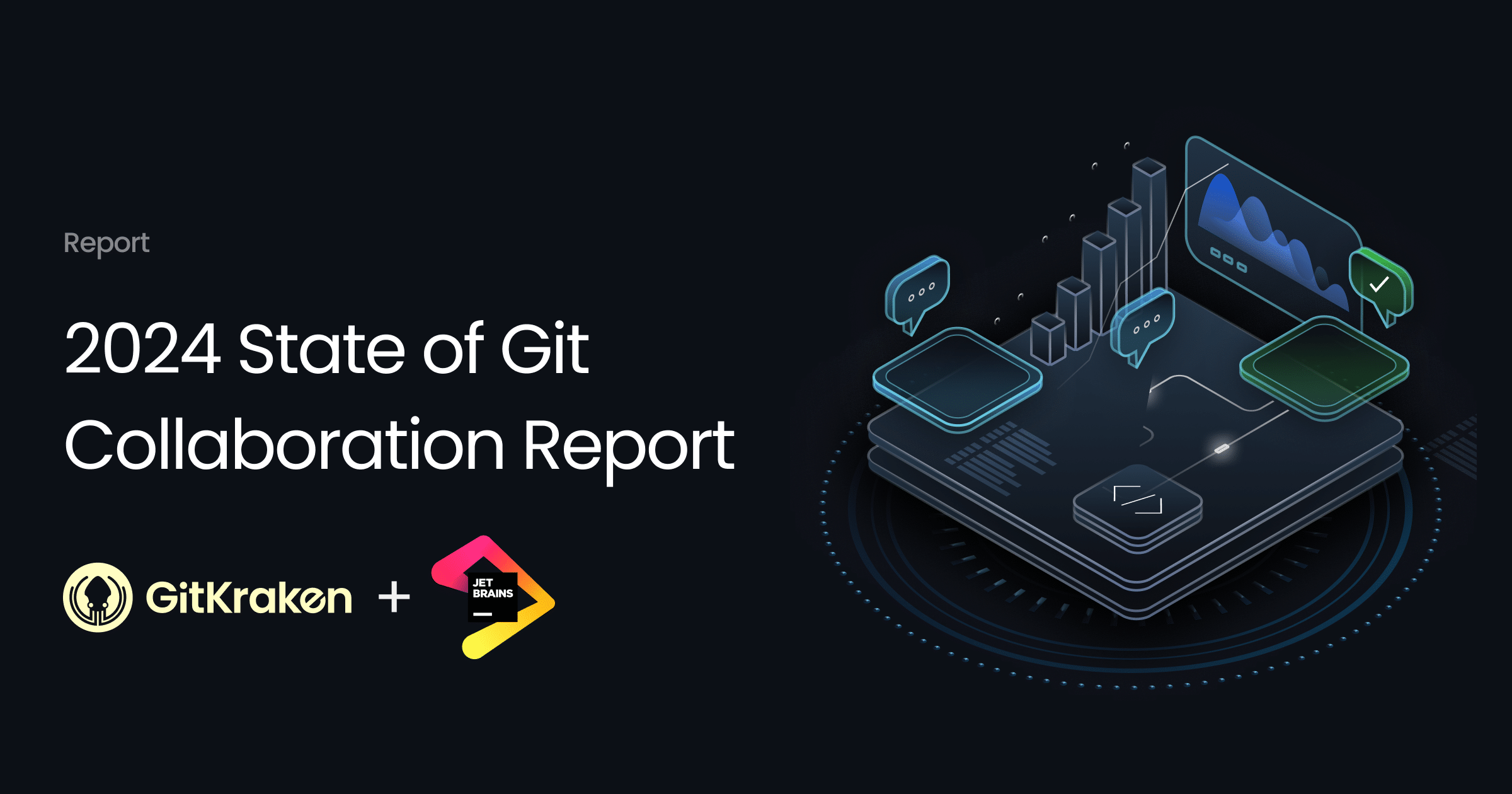Annual reports often feel full of fluff, but the 2024 State of Git Collaboration Report, developed by GitKraken in partnership with JetBrains and drawing on insights from 150,000 developers worldwide, gets straight to the heart of what makes the best development teams stand out in 2024.
Don’t worry about sifting through data – we’ve got all the highlights here, including how to optimize team structures, integrate smart tools, incorporate proactive communication strategies, and more, all to transform good dev teams into great ones.
Ideal Team Size: Less is More
While most of the developers we surveyed wished they worked in a larger team, these results hit upon a compelling contradiction: smaller teams appear to be more productive, with the ability to pivot quickly, communicate more effectively, and generally focus more on their tasks. But it’s not just about the number of developers, it’s about the group’s overall efficiency and unity.
Devs working in groups of 6-10 reported being the happiest with their team size, with 48% of respondents indicating that preference. This size not only fosters a close-knit environment that enhances trust and efficiency but also maintains the agility and focus needed for high productivity.
However, the higher commit rate of smaller teams doesn’t always mean more code is delivered – they’re generally just spending more time coding due to less overhead, unlike larger teams, which might get caught up in meetings and alignment issues. The challenge for larger teams lies in avoiding the “too-many-cooks” scenario by possibly organizing into sub-teams with defined, independent objectives or employing methods that enhance communication and streamline processes.
So, what’s the perfect dev team size? While it might vary based on your project’s needs and scope, GitKraken CTO Eric Amodio suggests Amazon’s rule – if you can feed your team with two pizzas, that’s a good group. Anything more than that might be getting too large.
Tool Synergy: The Backbone of Efficiency
The right tools can make or break a team’s productivity, and the survey’s data emphasized the need for tools that facilitate clear communication and transparency. Developers are not just looking for powerful features – they want platforms that enhance collaboration without adding complexity.
GitKraken, for instance, shines in this area by offering features that seamlessly integrate with your existing workflow. Whether merging Git repositories with project management tools like Jira or ensuring your team’s work is perfectly in sync, the right toolset can transform the way you work.
Communication: The Early Bird Gets the Worm
One theme that resonated throughout the report was the value of early and effective communication. It’s not just about keeping everyone informed; it’s about engaging the whole team in the development process from the get-go.
While this can be done through daily standups, that’s only one part of the picture. They have to be done effectively – focusing on blockers, upcoming projects, things you need help on, all of that provides a healthy environment for collaboration, rather than meetings where everyone’s zoned out and not getting any value.
We found that teams adopting a culture of sharing ideas and feedback openly tend to navigate challenges more smoothly, as well as maintain higher levels of motivation and satisfaction. GitKraken’s Cloud Patches were designed with this philosophy of collaboration in mind, enabling developers to share WIPs securely, encouraging a continuous feedback loop long before the PR.
JetBrains provides additional context into some of these barriers, with 54% of devs reporting that they spend more than 21% of their working time in meetings or work-related chats. That’s at least an entire day of the work week!
Context Switching and Flow State
The survey sheds light on a significant productivity drain for developers – context switching. It’s the leading individual barrier to productivity, with unclear or shifting priorities and unproductive meetings also high on the list. When considering the broader team, poor communication was identified as the primary obstacle.
Developers highlighted the challenge of context switching as a major hindrance to achieving a ‘flow state‘ – a condition where productivity and creativity surge effortlessly. Yet, JetBrains’ data reveals that only 32% of developers frequently experience this optimal state, while 40% find it elusive.
Matt Johnston, CEO of GitKraken, emphasizes the impact of context switching, “It’s not just time on task, it’s flow time – it’s the quality of time. It can be difficult to get into that flow state, and when you do, there’s millions of things that can pull you out. A Slack message, a meeting, a PR review request. It’s not that you need to spend 45 hours a week in flow state, you probably only have an hour or two a day. Maximizing that and sustaining that even a little bit longer, making it a little bit more pure – I hear about that all the time. The reason we talk about context switching is it becomes wasted time, which becomes a rework, which becomes lost progress.”
Maarten Balliuaw, Developer Advocate at JetBrains, shares a similar sentiment, “Context switching, unclear priorities, and those never-ending meetings. They feel like annoyances and this report from GitKraken has data to confirm they are. As developers and development teams, it’s time to look into tools and workflows that match our needs and cut through the noise that makes us unhappy. Get into the flow, and build awesome software!”
Remote Work Dynamics
With many devs working remotely, keeping a team connected and cohesive is more challenging than ever. Our findings indicate that distributed teams face unique obstacles, from aligning on tasks to maintaining a sense of team unity.
However, with challenges come opportunities. Tools that offer shared workspaces and real-time collaboration features are proving invaluable in bridging the physical gap between team members.
GitKraken Workspaces, for instance, can help keep remote teams aligned on their projects. By providing a central hub for collaboration, it ensures that regardless of where team members are located, they remain integrated and focused on common goals.
Wrapping It Up: Key Takeaways
With recommendations on ideal team size, selecting the best tools for seamless integration, and enhancing communication, this report provides a roadmap for teams aiming to improve their productivity. These insights can help development teams refine their processes and workflows, contributing to a more efficient and collaborative software development environment.
Check out the 2024 State of Git Collaboration Report and The State of Developer Ecosystem 2023 report to get all the details.
 GitKraken MCP
GitKraken MCP GitKraken Insights
GitKraken Insights Dev Team Automations
Dev Team Automations AI & Security Controls
AI & Security Controls







